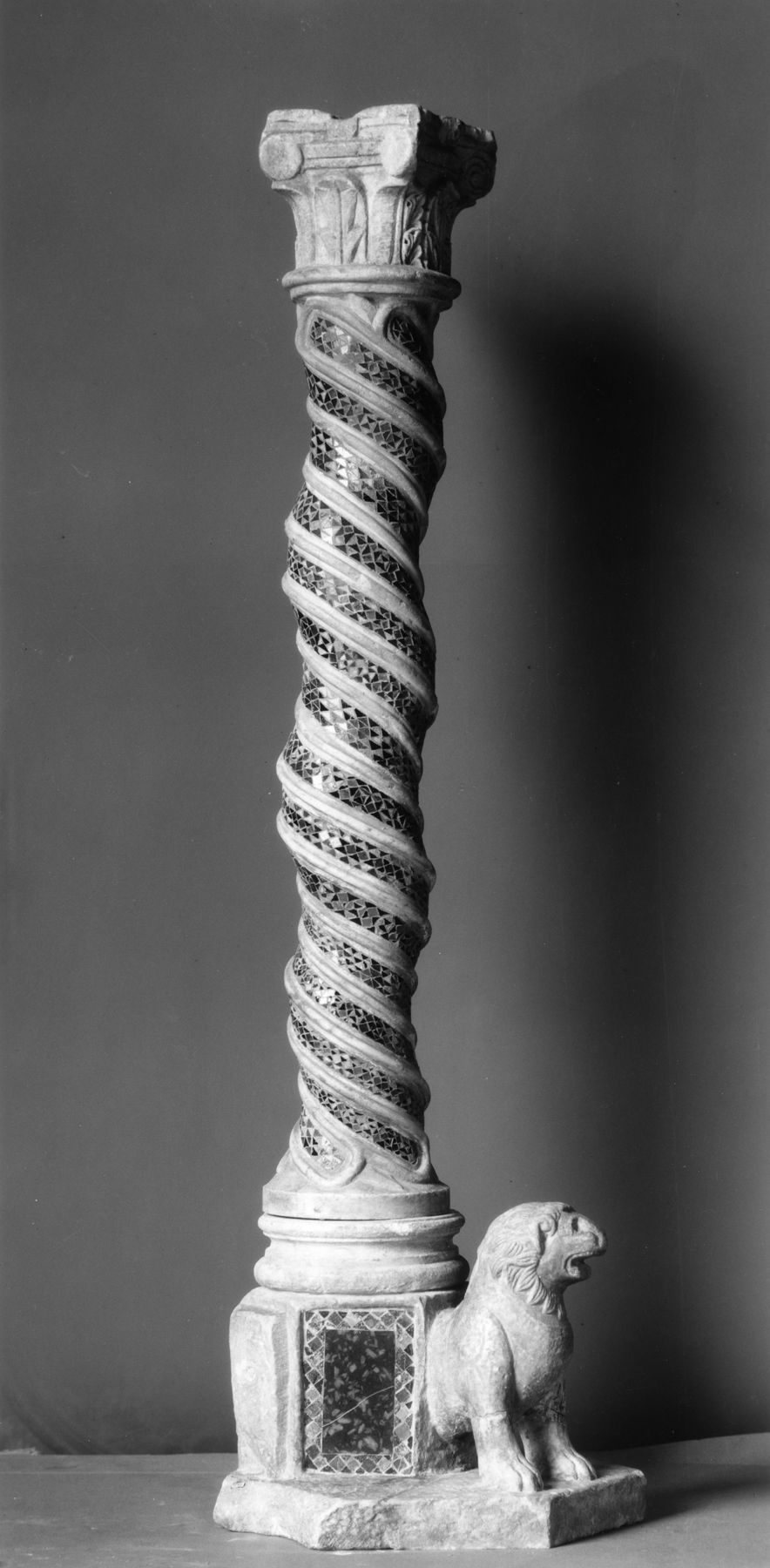Column with a Lion at the Base
(Medieval Europe )
These decorative columns probably came from a ciborium or pulpit. The capital is a stylized version of an antique capital, many of which were re-used in a somewhat earlier period. The inlaid glass and stone fragmnets that decorate the column-- called "cosmati" decoration-- is typical of central and southern Italian design and occurs on columns, facades, tombs and even floors (stone inlay). The column bases are modern.
Provenance
Provenance (from the French provenir, 'to come from/forth') is the chronology of the ownership, custody, or location of a historical object. Learn more about provenance at the Walters.
[Said to be from a church in Avezzano destroyed by an earthquake in 1915]; Joseph Brummer, Paris and New York, by purchase; Henry Walters, Baltimore, [date of acquisition unknown] by purchase; Walters Art Museum, 1931, by bequest.
Conservation
| Date | Description | Narrative |
|---|---|---|
| 6/14/1966 | Treatment | cleaned |
| 6/22/1971 | Treatment | cleaned |
Geographies
Italy, Avezzano (Place of Origin)
Measurements
H: 43 3/8 in. (110.17 cm)
Credit Line
Acquired by Henry Walters
Location in Museum
Not on view
Accession Number
In libraries, galleries, museums, and archives, an accession number is a unique identifier assigned to each object in the collection.
In libraries, galleries, museums, and archives, an accession number is a unique identifier assigned to each object in the collection.
27.381


